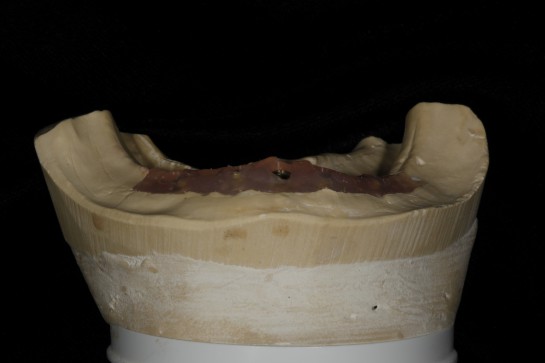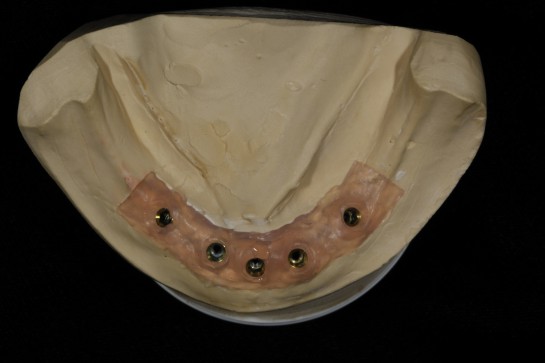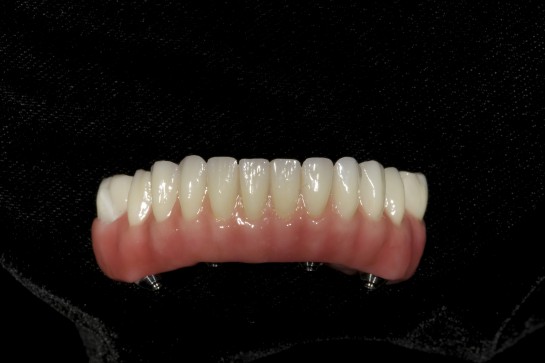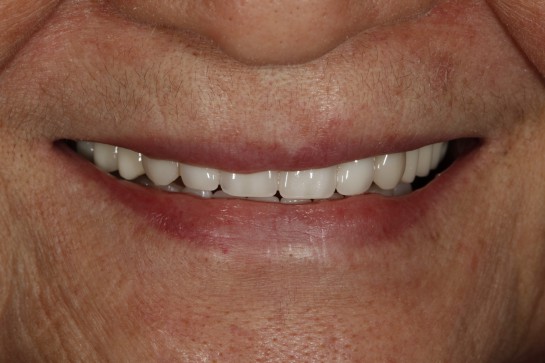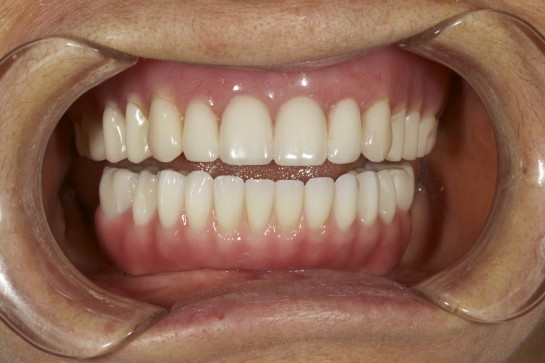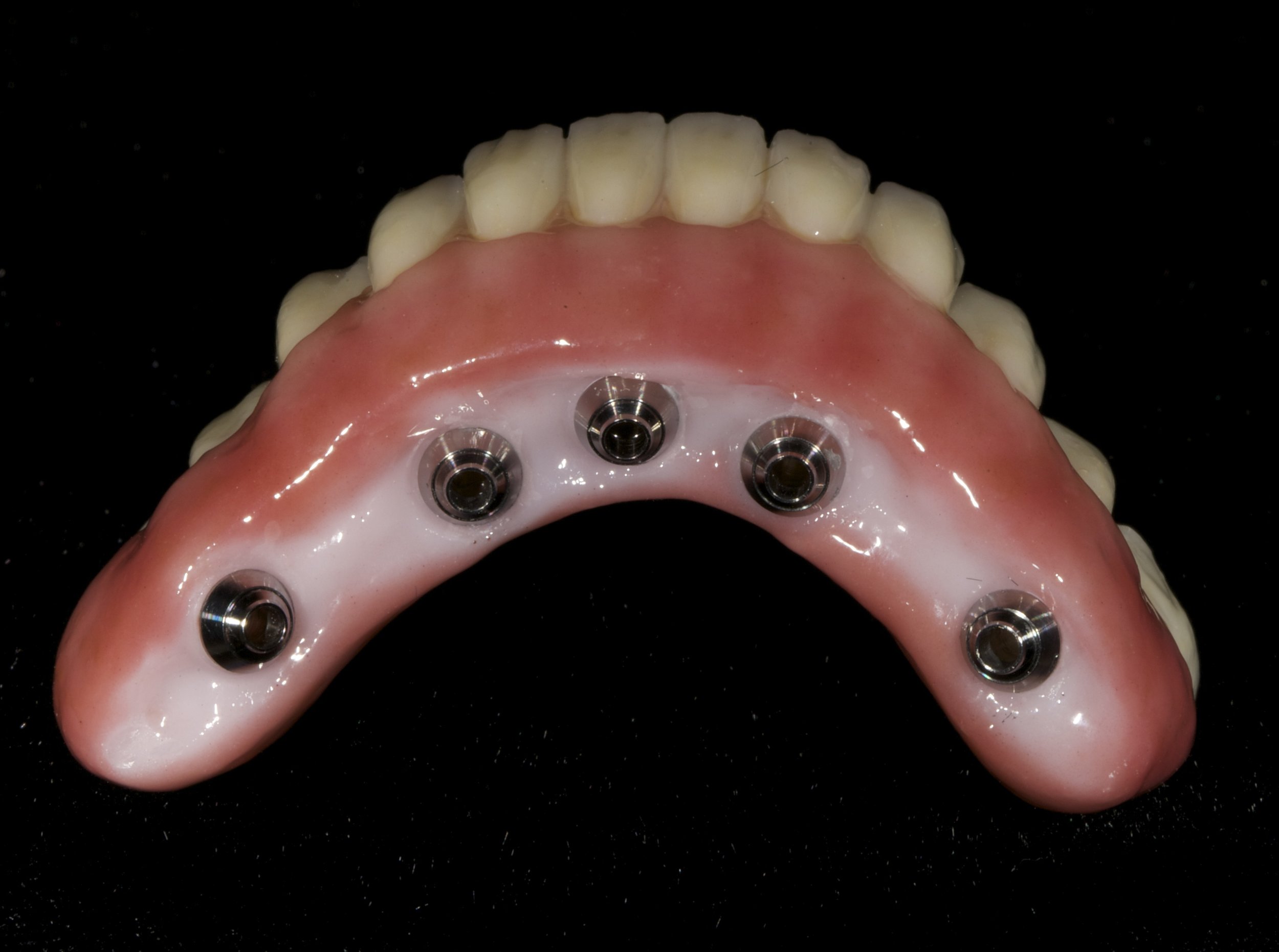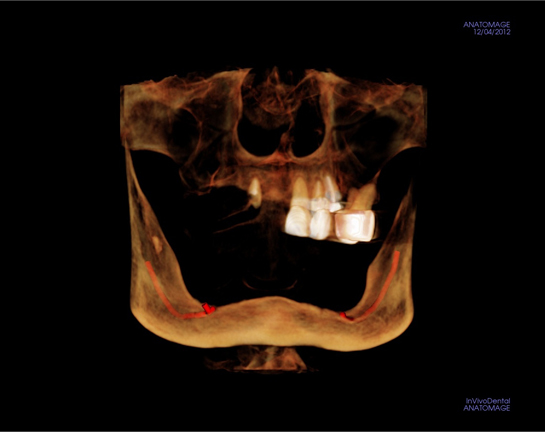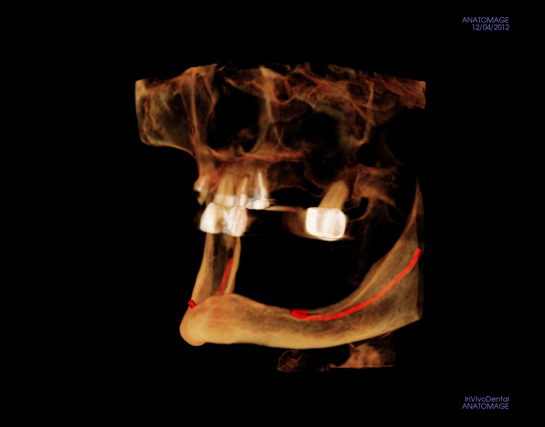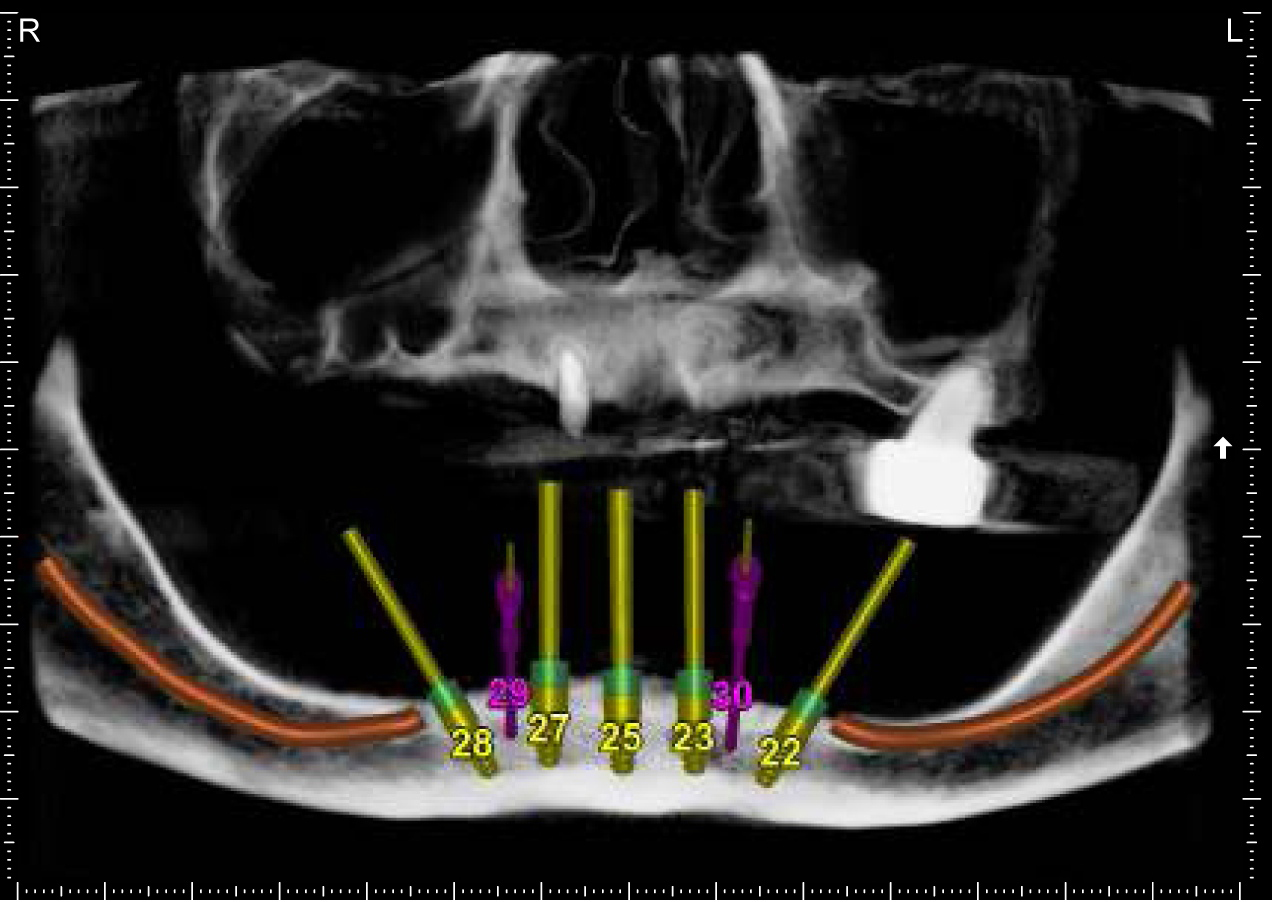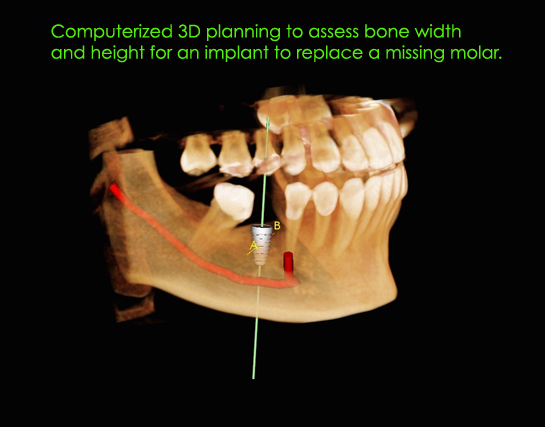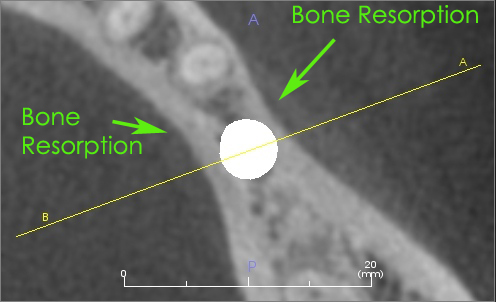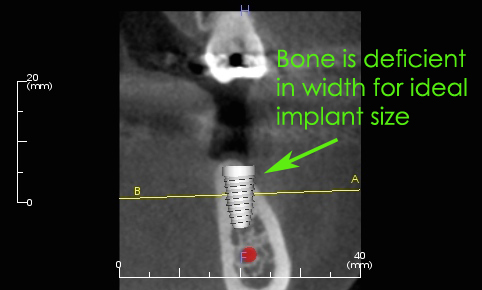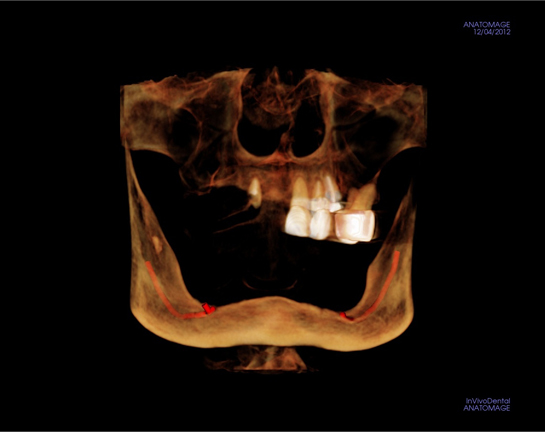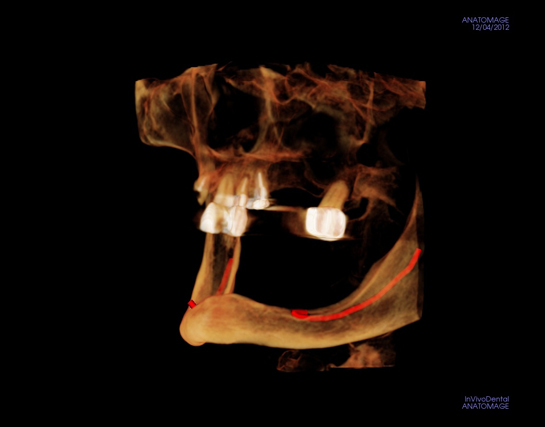This is a follow up of my blog entry dated December 19th, 2013 . In that entry I discussed why lower dentures hurt and what can be done to address the problem. These images illustrate a complete case from preliminary assessment to the final prosthesis in the patient's mouth. I was able to execute this treatment by handling both the surgical procedures and the restorative procedures in my office.
1. CT scan to assess bone condition and location of the nerves:
2. Treatment planning using computerized software and the actual CT Scan.
3. Placement of the planned dental implants in the exact locations as displayed by the stone and model with replica of the soft tissue and the implants.
4. Final delivery of upper full denture and lower fixed zirconia/porcelain hybrid prosthesis.
By keeping the lower prosthesis away from the nerves, the patient regained her chewing function which used to be debilitating from the pain induced by the removable lower denture. Note the difference in esthetic between the lower zirconia/porcelain and the upper denture acrylic.
Images of actual patients of Alex Nguyen, DDS are Copyrighted and Digitally Embedded to track Unauthorized Use.

